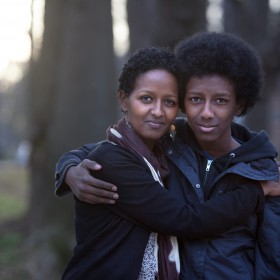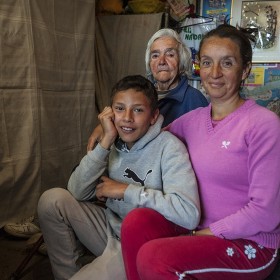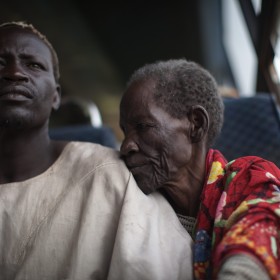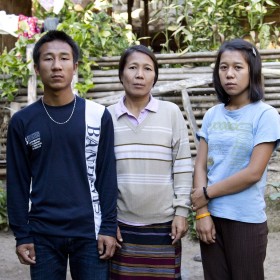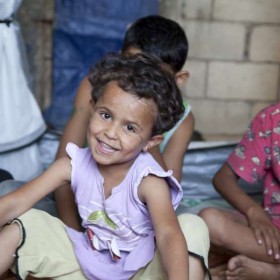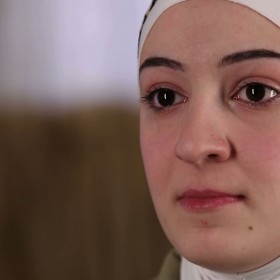Neil Gaiman meets a newly arrived Syrian refugee family
Best-selling author and UNHCR High Profile Supporter, Neil Gaiman, has just returned from Jordan seeing UNHCR’s frontline work with Syrian refugees. Together with UNHCR, Neil and co-founder and designer of Marchesa, Georgina Chapman, are developing a storytelling project highlighting the Syrian refugee crisis.
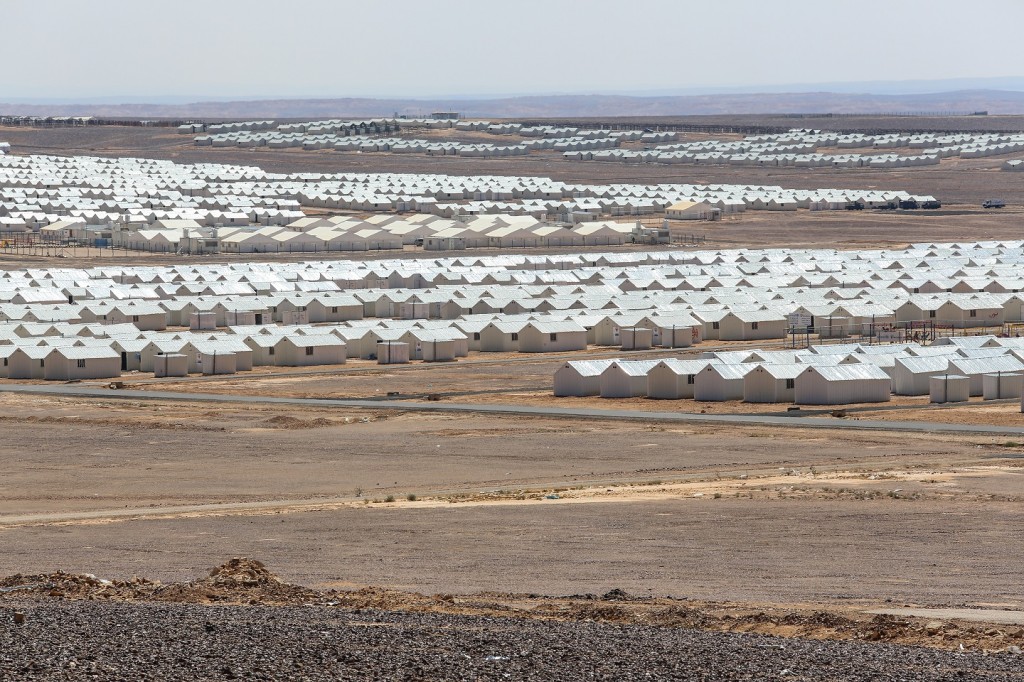
Photo by UNHCR/J. Matas/2014.
Azraq refugee camp opened 2 weeks ago when Za’atari camp was full. About 100,000 people live in Za’atari. Azraq will have the capacity to shelter 130,000 refugees from Syria. Two weeks in, only 4,000 refugees live in the middle of a harsh, inhospitable, desert. Most of these white buildings are uninhabited. It feels like a ghost town on Mars – bleak, soulless, unforgiving. But given the flood of refugees from Syria into neighbouring countries – it’s about 3 people every minute – it won’t be long before this camp is full of families, before it takes on a life and character of its own, and it begins to breathe. And even in this early stage, it is still a sanctuary for people escaping the horrors of the conflict in Syria.

Photo by UNHCR/J. Matas/2014.
Families fleeing across the Syrian/Jordanian border are immediately welcomed by the Jordanian Army and UN Refugee Agency (UNHCR) staff. They are given blankets and biscuits and are brought to the camp, where they rest before being registered. There are on average 400 refugees arriving every day into Jordan and when they finally arrive at the camp it is usually in the middle of the night. Abu Salah’s extended family (that’s not his real name) arrived in Azraq at 4.00am in the morning. Brothers and cousins, wives and children. They told us of the hunger and danger that forced them to leave Syria, eating grass and drinking swamp water, of the nightmare of their trek to the border, paying all they had left in bribes to their guides, of walking through the rocky desert, until their shoes fell apart. I’m here with the UNHCR staff, listening to Abu Salah and his brothers and cousins tell me their story. Even hearing it is traumatic – I cannot imagine what it must have been like to experience.
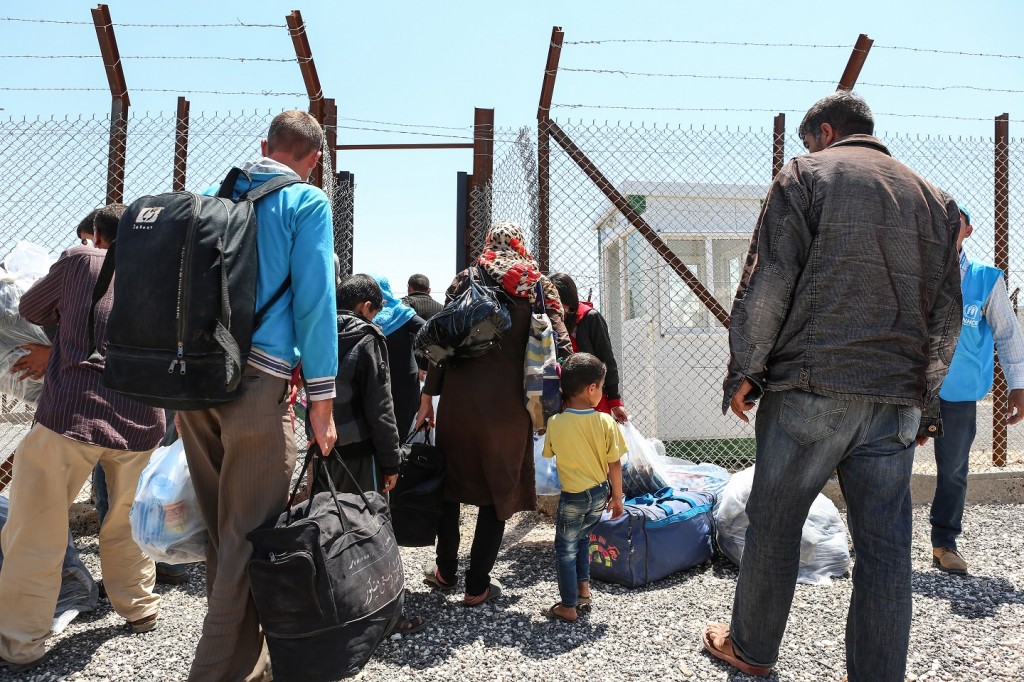
Photo by UNHCR/J. Matas/2014.
Most refugees cross the border with just the clothes on their backs, perhaps a bag with one change of clothes for the children. They have had to leave so quickly they haven’t had time to pack, or there is nothing left to pack because they’ve had to sell everything in order to survive, or their possessions have been destroyed. Those of them who did fill bags with their things have often abandoned them on the final walk through the desert, as they had to carry tired, scared children instead, or the smugglers people are paying to get them out of Syria to safety force families to leave them.
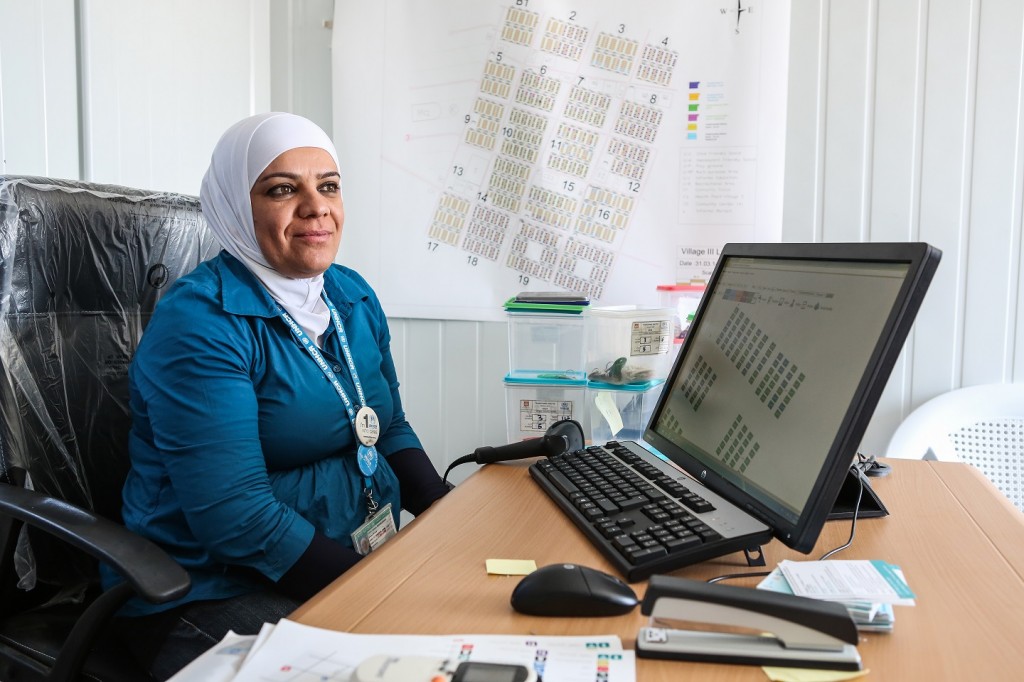
Photo by UNHCR/J. Matas/2014.
Azraq is windy. Test tents were (literally) blown away, so UNHCR had to develop a new type of insulated shelter for Azraq camp. Constructed using local materials, the shelters give protection against the harsh weather conditions. The UNHCR allocation system is amazingly sophisticated — a little like a ticket booking system. Refugees can reserve shelters near them (for up to a month) for family/neighbours they know are planning on crossing the border. The idea is to make villages of people who will help each other.
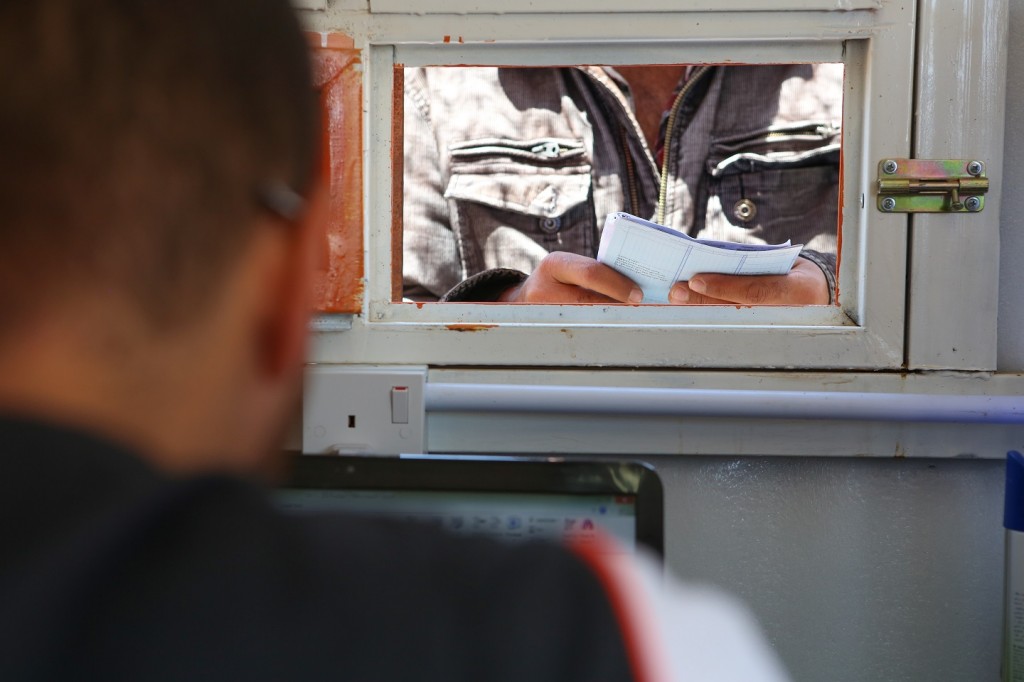
Photo by UNHCR/J. Matas/2014.
Early every morning the refugees are given bread, but that’s the only food hand-out. Instead, refugees in Azraq are given cash vouchers that allow them to buy their own food. There is a perfectly new supermarket in the camp (put up in two weeks!) where refugees can redeem their vouchers and where, for just a while, they can feel normal. If you give people choice and the ability to determine what they feed their own family, you give people a moment of dignity. Wherever possible, the brands on the shelves are Syrian, and the fresh produce, eggs, etc are local, helping the local economy in Jordan.
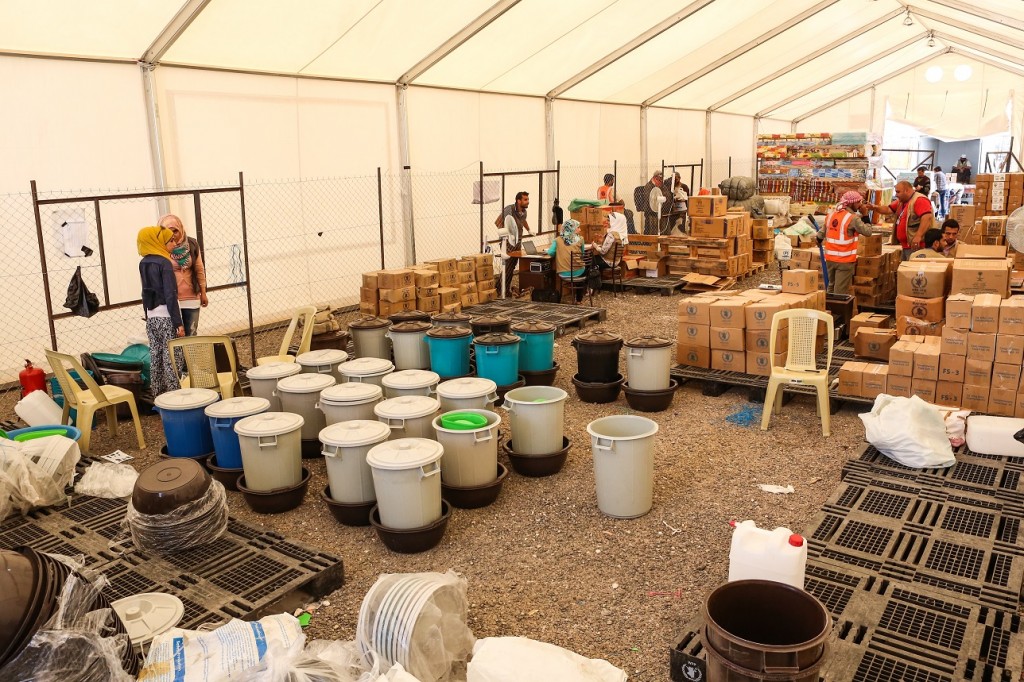
Photo by UNHCR/J. Matas/2014.
UNHCR distributes core relief items to all the newly arrived refugees including mattresses, cooking kits, hygiene kits, solar lamps (there’s no electricity in Azraq), tarpaulins, sleeping mats, water buckets, jerry cans, stoves. Most of the families arrive with nothing. They have no possessions. They are going to be here for a long time. UNHCR gives them everything, even kits containing pots, pans, toothpaste, toothbrushes, laundry soap. They want their arrivals to feel a sense of dignity – being clean, being able to cook for their children, being able to fetch water.
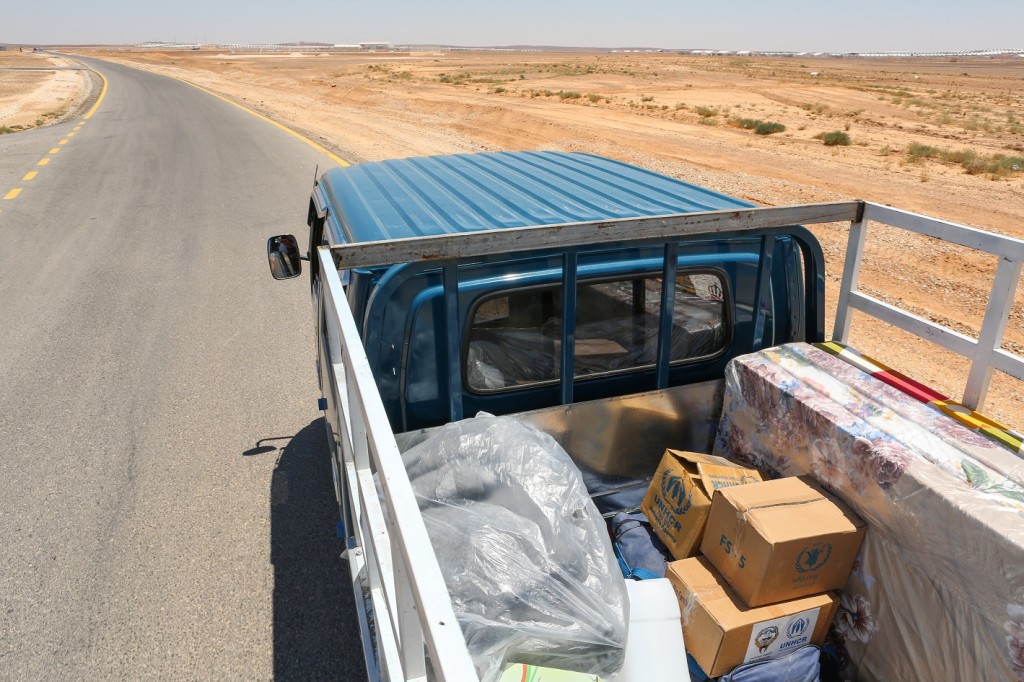
Photo by UNHCR/J. Matas/2014.
We followed Abu Salah’s family to their shelter, their new home. They had arrived in darkness so this was really their first view of the camp. I don’t know what looking out over the desert, this environment so different from the green landscape they came from, must have felt like. I know from talking to them how much they love Syria, how much it hurt to leave.
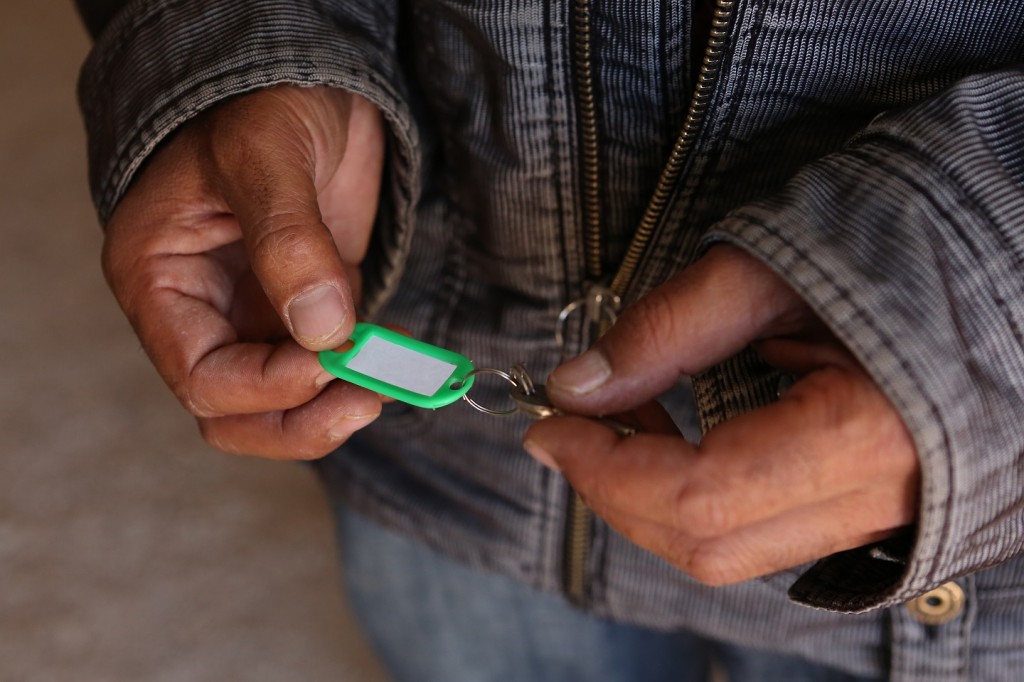
Photo by UNHCR/J. Matas/2014.
We helped them unload the truck, and bring their new possessions in. When Abu Salah’s family arrived at Azraq the night before, they were just relieved to be safe, to be at the end of an extremely harrowing journey of escape, to know their children would sleep without the sound and fear of bombs and gunfire, that there would be safety and food, and clean water to drink, cook with, wash themselves.
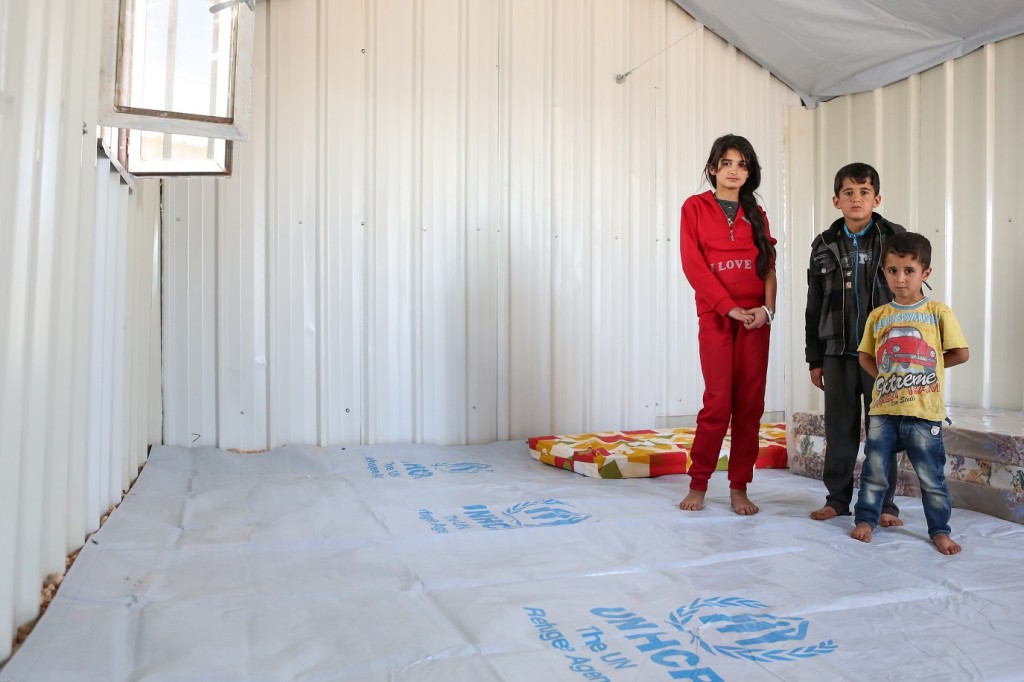
Photo by UNHCR/J. Matas/2014.
But the moment they unlocked their shelter it was as if they realized what they had lost. They spread the tarpaulin on the rocky ground, put down their sleeping mats. In that moment I think they felt the full weight of what it means to be a refugee. UNHCR does its best, but nothing can cushion that blow. They will be here for years, living in a rocky desert far from their home.
Captions by Neil Gaiman/2014.




